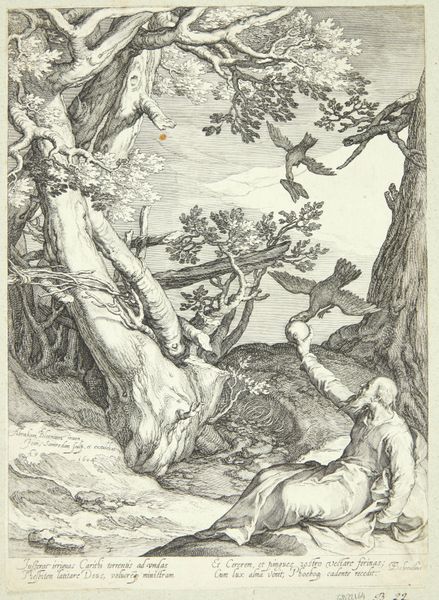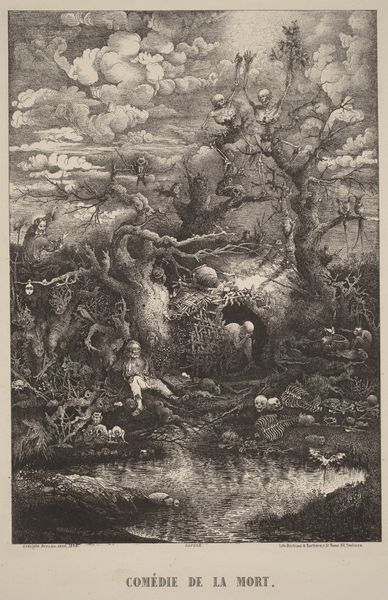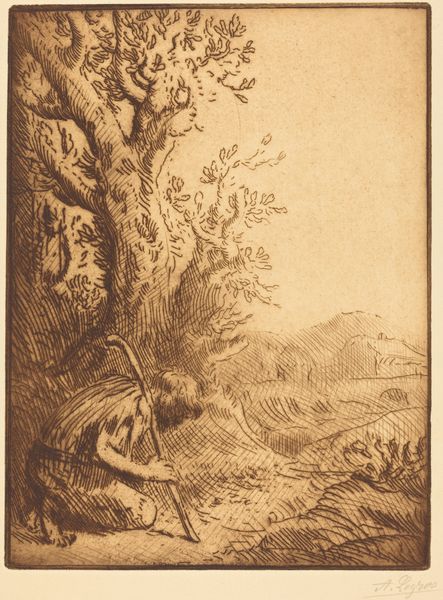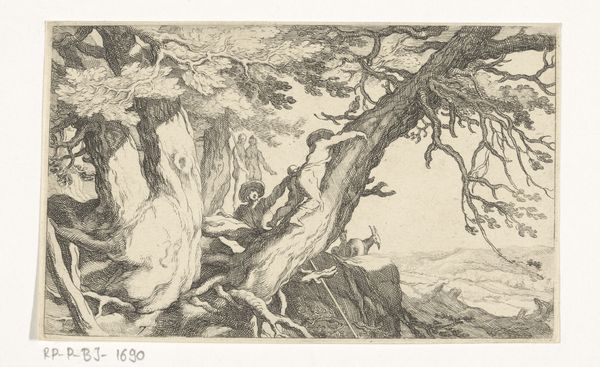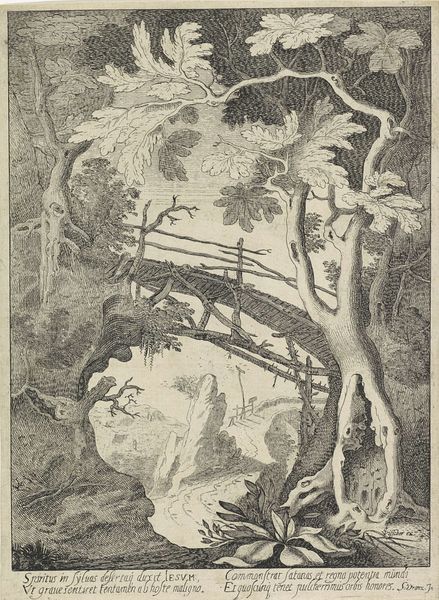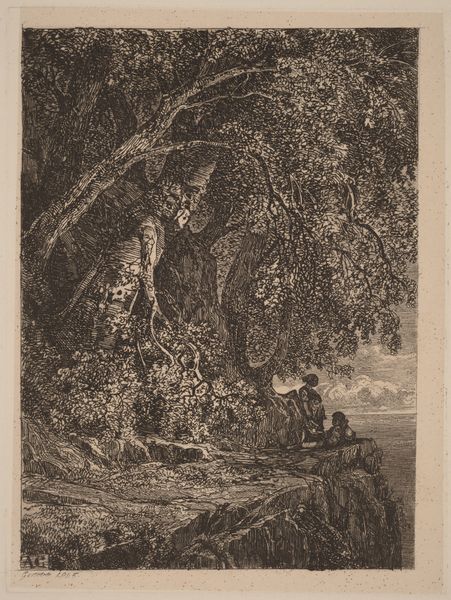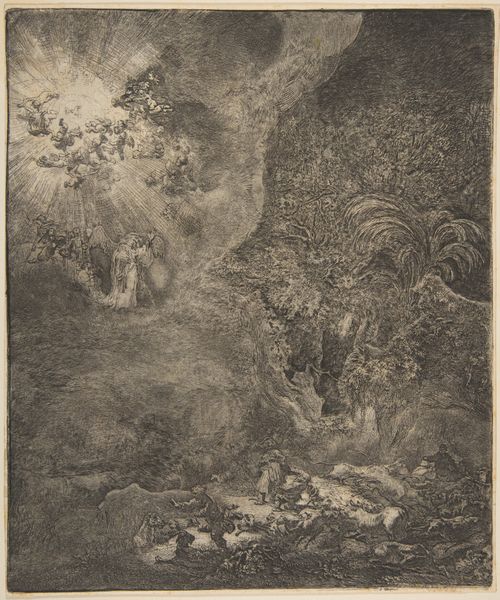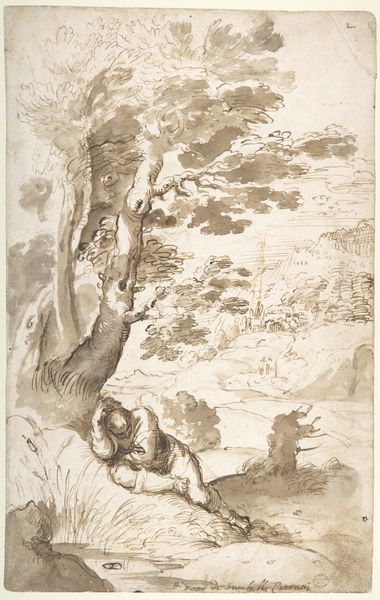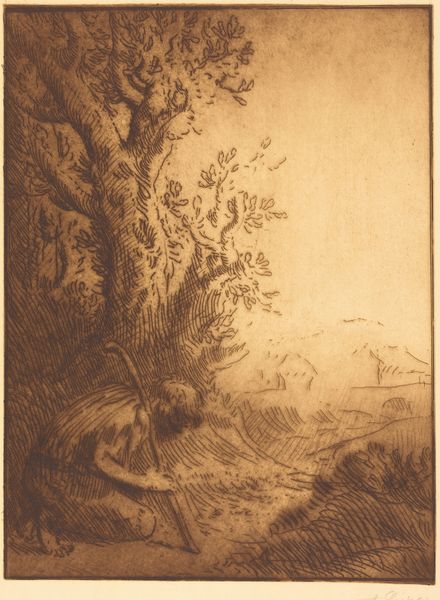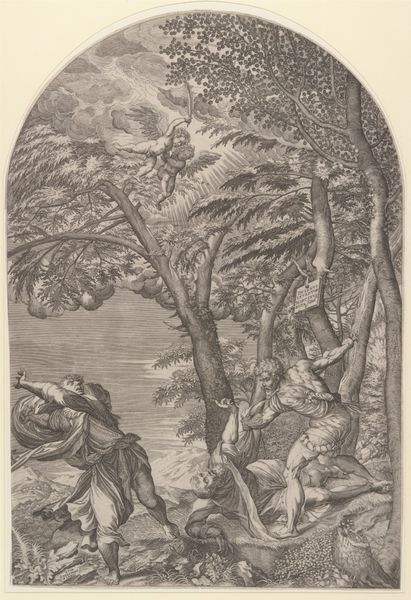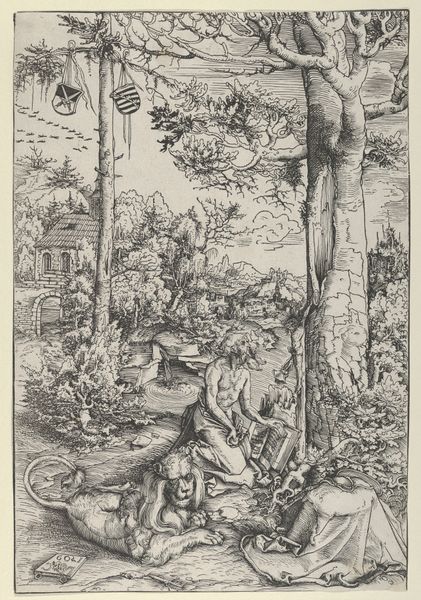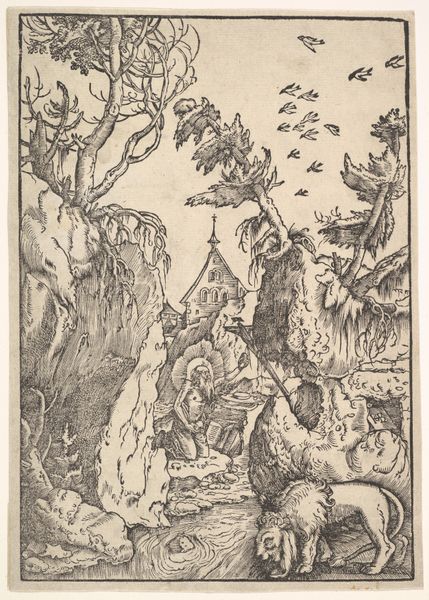
drawing, etching
#
drawing
#
baroque
#
etching
#
landscape
#
history-painting
Dimensions: sheet: 10 x 7 1/2 in. (25.4 x 19.1 cm)
Copyright: Public Domain
Curator: Frederick Bloemaert's etching, "Landscape with a Hermit Praying," likely executed between 1566 and 1674, presents a rather striking scene. Editor: The first thing that hits you is this dense network of roots enveloping what seems to be an old, brick structure. It's almost gothic in its moodiness, even with the hermit tucked away in prayer. Curator: Indeed. Consider how Bloemaert structures the composition. The gnarled tree dominates the foreground, its form echoed in the subtle curve of the distant hills. Notice also the sharp contrast between the textured bark and the smoothness of the sky—the interplay of line and shadow adds depth and dynamism to what would otherwise be a simple devotional image. Editor: But look closely at those roots! Bloemaert clearly spends an enormous amount of effort on the detail of these materials. You can almost feel the coarseness of the bark. This intricate detail points to the physical labor involved in the artist's meticulous crafting. He makes use of crosshatching and stippling which shows labor and skills in etching. Curator: From a stylistic point of view, this etching shows Baroque qualities, it embodies a clear emphasis on dynamic movement, deep contrast, and dramatic symbolism, typical for the period, while simultaneously integrating subtle religious connotations and historical narrative. Editor: That hermit, for instance. Though small, his inclusion transforms a mere landscape into something more profound. I am curious about who produced the paper on which this print appears and where those raw materials came from! This is a great print of a great tree! Curator: That being said, reflecting on Bloemaert's control of the medium reveals the careful composition of "Landscape with a Hermit Praying." The structured placement of each element makes you want to reflect on each minute detail, bringing a calming sensibility. Editor: I'm most drawn to thinking about what these organic materials would have been like in a physical and social sense and, I wonder, how his workshop functioned in society and contributed to the wider world of Baroque art.
Comments
No comments
Be the first to comment and join the conversation on the ultimate creative platform.
